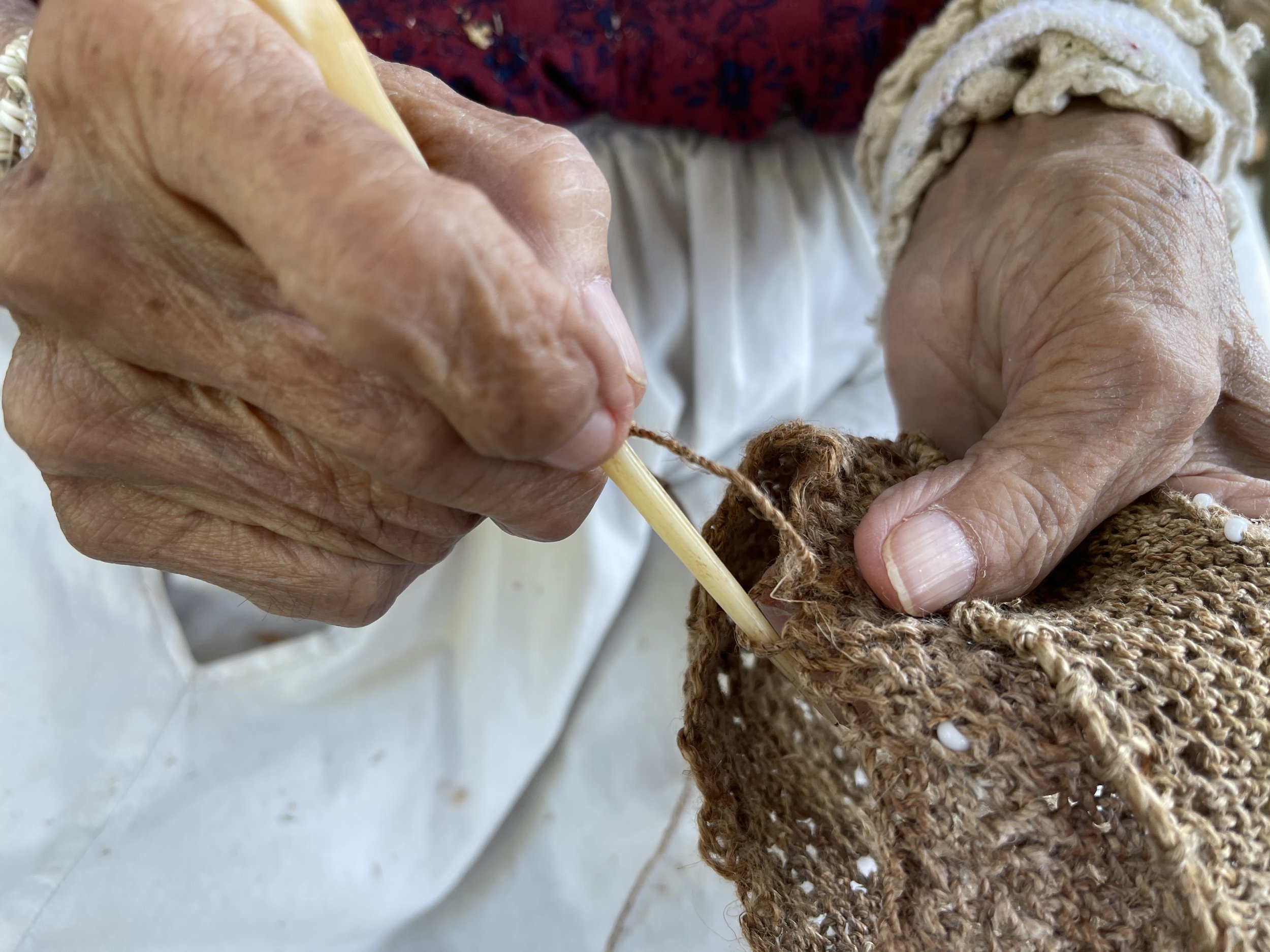Cultural Committee
Cultural Programs and Projects Committee
Supporting: (1) Native California elders and culture bearers in the sharing of cultural legacy through workshops and program series; and (2) research and documentation projects that foster the revitalization, renewal, and restoration of Native California cultural skills and foodways.
NATIVE CALIFORNIA PERMANENT EXHIBIT
California State Indian Museum in State Indian Museum State Historic Park in Sacramento
http://www.parks.ca.gov/?page_id=486
In addition to the stunning range of Native California cultural objects displayed, “many Native people have donated photographs of family and friends for viewing.” Photographs that honor Native California elders adorn one wall. The museum store features Native-made objects.
REGIONAL EXHIBITS
Agua Caliente Cultural Museum in downtown Palm Springs
“This new museum will celebrate the history, culture and modern times of the Agua Caliente Band of Cahuilla Indians.”
Antelope Valley Indian Museum in Antelope Valley Indian Museum State Historic Park in Lancaster
This museum “houses objects created by the Native American cultures of the western Great Basin, California, and the Southwest.” To search its online holdings or that of the entire State Park system, go to: http://www.avim.parks.ca.gov/search.shtml
Autry Museum of the American West in Griffith Park in Los Angeles
The museum’s exhibitions include an ongoing Ethnobotany Garden that features past and present uses of plants by local tribal peoples. It also hosts rotating exhibitions that highlight Native California history and cultures past and present.
California Indian Museum and Culture Center (CIMCC) in Santa Rosa
CIMCC was “founded in 1996 with the purpose of educating the public about the history, culture, and contemporary life of California Indians and to honor their contributions to civilization.” It portrays “California Indian history and culture from an Indian perspective” and “showcases and encourages the present-day renaissance of California Indian culture, affirming its survival and continued vitality in the face of extreme adversity.”
Chaw’se Regional Indian Museum in Indian Grinding Rock State Park
“https://www.parks.ca.gov/?page_id=553
The museum features a variety of exhibits and an outstanding collection of Sierra Nevada Indian artifacts. A Miwok village complete with a ceremonial roundhouse has been reconstructed in the middle of the small valley.”
Clark Historical Museum in Redding
This Clark Museum, “a living museum that is closely involved with the Indian community…, is dedicated to preserving and displaying traditional Northwestern Indian culture in all its beauty and magnificence.”
Hoopa Tribal Museum on the Hoopa Valley Tribal Reservation
https://www.hoopa-nsn.gov/departments/1490-2/museum/
Most of the artifacts in this “Living Museum” are “still actively being used by the members of the tribe for tribal ceremonies and functions…. As its “core premise and function,” the “museum is for the Hupa people and not just about them.” The museum hosts guided tours of its exhibitions and of “three different traditional village sites along the Trinity River.”
Karuk Tribe People’s Center Museum and Gift Shop in Happy Camp
https://www.karuk.us/index.php/departments/peoples-center
Established in 2002, the museum is “devoted to the preservation, promotion and celebration of Karuk history, language, traditions and living culture.”
Malki Museum, Inc. on the Morongo Reservation
California’s First Museum Founded by Native Americans Celebrating Southern California Indian Culture for Over Fifty Years
Established in 1964, the Malki Museum is dedicated to the goals of “preservation and education,” including a “growing academic publishing company, the purchase of another well-established publishing house, the re-design of the Temalpakh Ethnobotanical Garden (which houses an array of plants used by the Cahuilla for food, housing, and medicine), several educational projects and annual events, and the ability to provide limited scholarships to Southern California Indian students, among other things. Currently, a research library and lecture hall are in progress….”
Satwiwa Native American Indian Culture Center in the Santa Monica Mountains National Recreation Area
https://www.nps.gov/samo/planyourvisit/satwiwa-native-american-indian-culture-center.htm
This center highlights Chumash and Tongva/Gabrielino cultures, including year round “workshops, programs, and art shows.” On weekends, National Park Service
Turtle Bay Museum in Redding
https://www.turtlebay.org/museum
The museum includes permanent exhibits featuring the history and cultures of the Wintun and Atsugewi past to present.
Ya’i Heki’ Regional Indian Museum in Lake Perris State Recreation Area
https://www.parks.ca.gov/?page_id=24699
This museum features “the cultures of the indigenous peoples of inland Southern California.”
RESOURCES
California Indian Basketry Association (CIBA)
To Preserve, Promote, and Perpetuate California Indian Basketry Traditions
“CIBA’s vision is to preserve, promote and perpetuate California Indian basketweaving traditions while providing a healthy physical, social, spiritual and economic environment for basketweavers.” Its activities include the hosting of an annual gathering.
California Indian Heritage Center Foundation (CIHCF)
https://www.cihcfoundation.org/about-us
This “Native-based association” procures “funding in support of the interpretive and educational programs and projects of the State Indian Museum. Further, it is dedicated to the planning, support, and development of the future California Indian Heritage Center, a multi-faceted facility that will house cultural items and provide interpretive programming, meeting space for Native communities, and gathering areas for community use.”
Reexaming Our Past Initiative of California State Parks
https://www.parks.ca.gov/?page_id=30464
A land holding agency model for identifying and removing “residual derogatory place names; inappropriate honorifics associated with the historical legacy…monuments, statues and plaques; and inadequate interpretive programs or exhibits that fall short in fully contextualizing California’s history in parks.”
CULTURAL PROGRAMS AND WORKSHOPS
Dorothy Ramon Learning Center
Our Words, Our Arts, Our Stories, Tell the Stories, Sing Our Songs
The center offers “hands-on activities and workshops that save and share Southern California’s Native American cultures.” It partners “with tribes, museums, schools, and other organizations to serve all interested in learning” while also focusing on research, preservation, and documentation projects, including through its Ushkana Press.
Idyllwild Arts Foundation
Changing Lives Through the Transformative Power of Art
https://idyllwildarts.org/cahuilla-basketry/
The foundation hosts week-long workshops featuring Cahuilla basketry and pottery.
Miwok Archaeological Preserve of Marin
https://mapom.org/skillsclasses.html
MAPOM has offered a biennial cultural workshop series for decades.
Sue-Meg Village State Park
https://www.parks.ca.gov/?page_id+417
“In 1990, the Yurok community worked with California State Parks to build a recreated Yurok village within the park,” where cultural programs and ceremonies take place.


